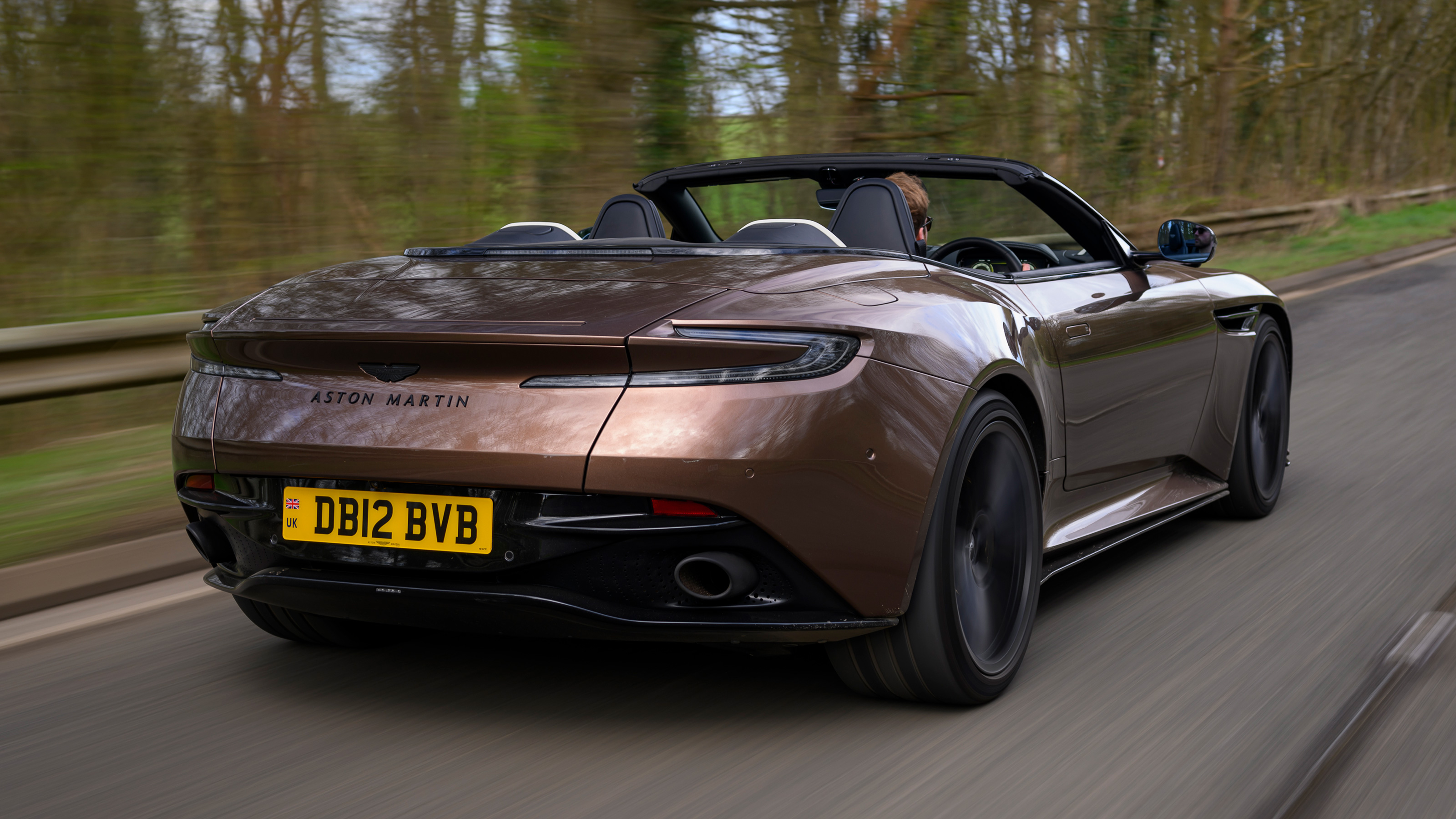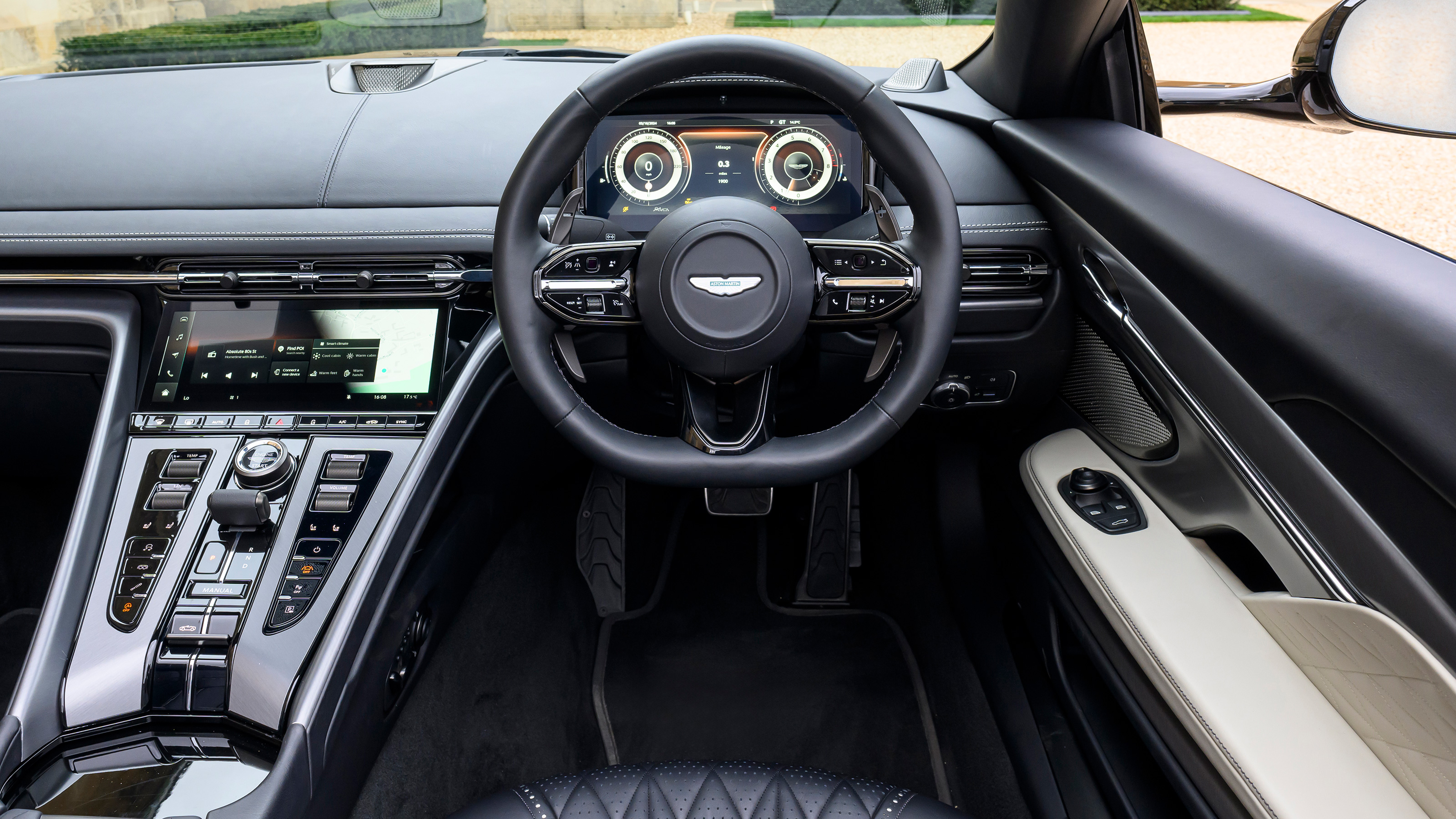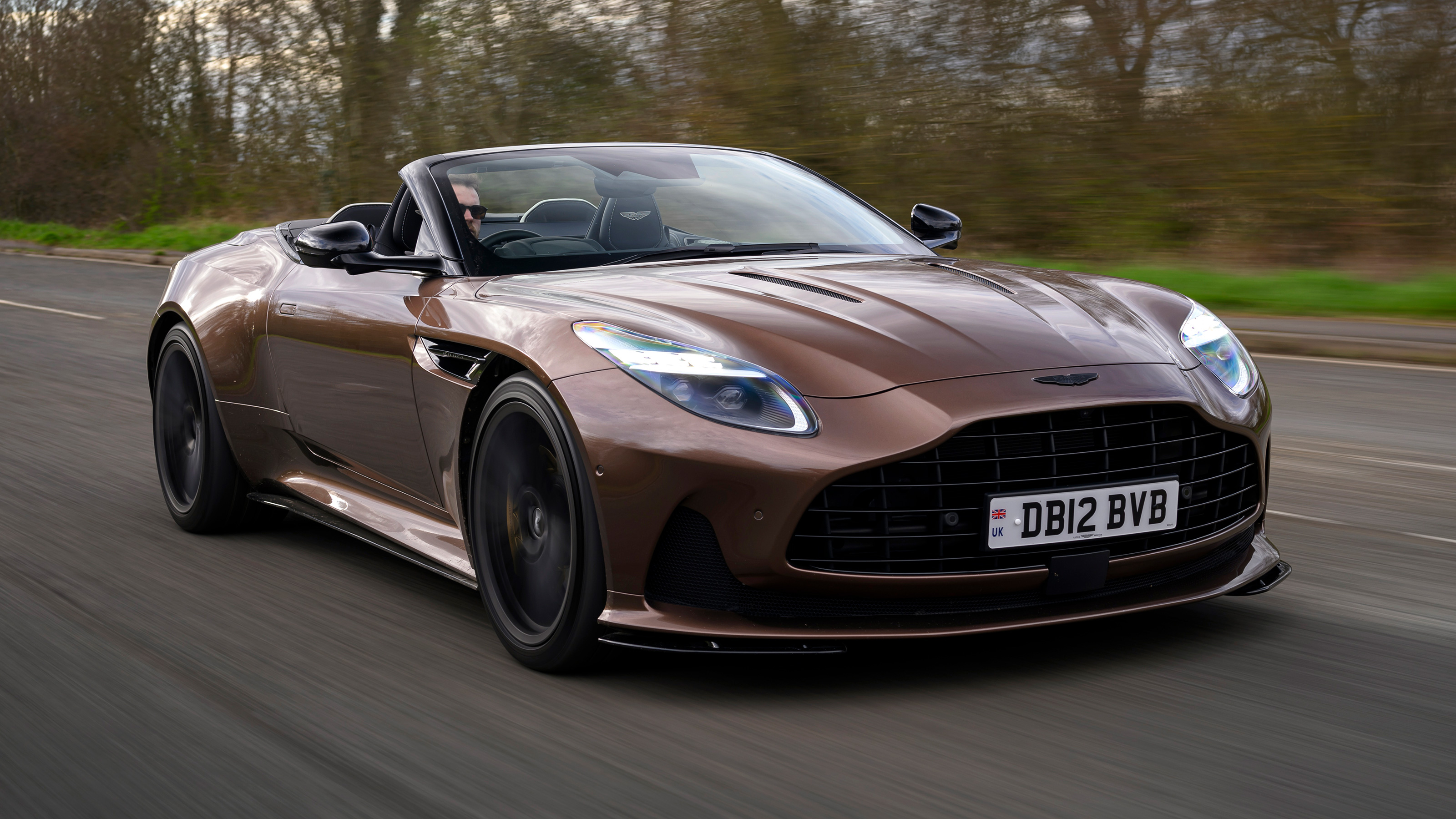
Interior
What is it like on the inside?
You can head over to TopGear’s definitive review of the DB12 coupe by tapping here, with the big rundown of what’s new inside. Here we’ll concentrate on what’s successful (and less so) about transplanting said interior into the Volante.
On the whole this is a stunning cabin. The trim materials, upholstery and switchgear feel fabulously expensive, marking a dramatic improvement versus the DB11 Volante. However, certain design choices are a little baffling.
For example, the glossy ‘piano’ black plastic switchgear on the lower half of the centre console. While we utterly applaud the use of tactile buttons instead of a Mercedes SL-esque touchscreen nightmare, the shiny surfaces are tricky to see when the roof is down due to reflections from the light pouring into the cabin. The backlighting in the buttons is also far too weak, so you’re never sure which mode the exhaust or suspension is in, or if you’re in manual gearbox mode or not.
The touchscreen fonts could also do with being a few sizes larger for the same reason, particularly in the driver assistance menu, which you’ll be visiting every journey to disable the various mandatory bongs and alerts which spoil the ambience inside.
That’s the bad news then. What’s good?
But so far as the cabin goes, it’s good news from hereon out. The seats are comfortable and the driving position offers ample adjustment. This is Aston’s best steering wheel for eons, and with only two touch-sensitive buttons to get irritated by, it’s leagues better at operating tech than the wheel in any AMG these days.
You even get a glovebox, unlike the DB11, while the gimmicky retractable cubbyhole lid between the seats has made way for a more practical hinged armrest.
How practical is it?
A DB12 weak spot, this… though that’s inherited from the DB11. As usual for a car in this class, the back seats are strictly luggage space only (if you need to seat more than two occupants the Bentley is your only option). Then again you’ll be needing the rear seat cargo room as the boot is worryingly small, encumbered by the roof mechanism.
It’s also strange that Aston has seemingly failed to rectify an easy-to-solve issue from the DB11: there’s still no button on the bootlid to open it from the car’s rear, and no handle on the inside to pull it closed. So you’ll have to pull out the lumpen key when opening the boot, and get grimy hands when shutting it. Even a Dacia Sandero doesn’t force you to do that.
Featured

Trending this week
- Car Review
BMW iX3






